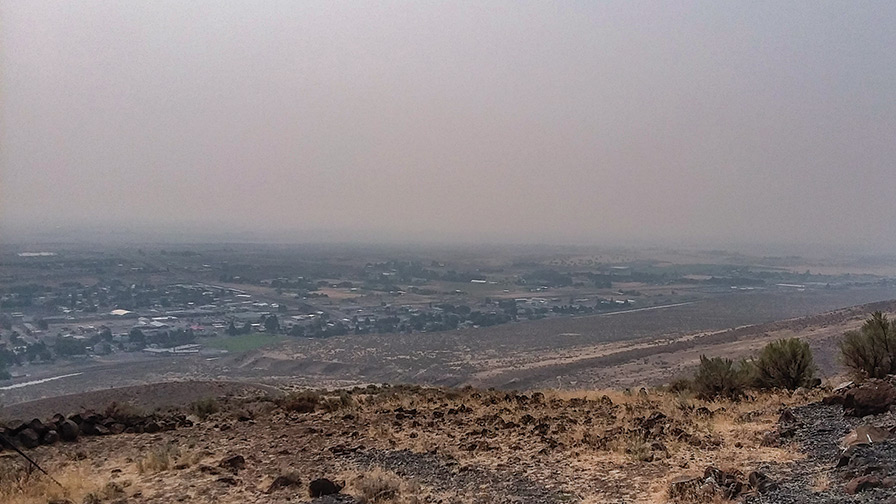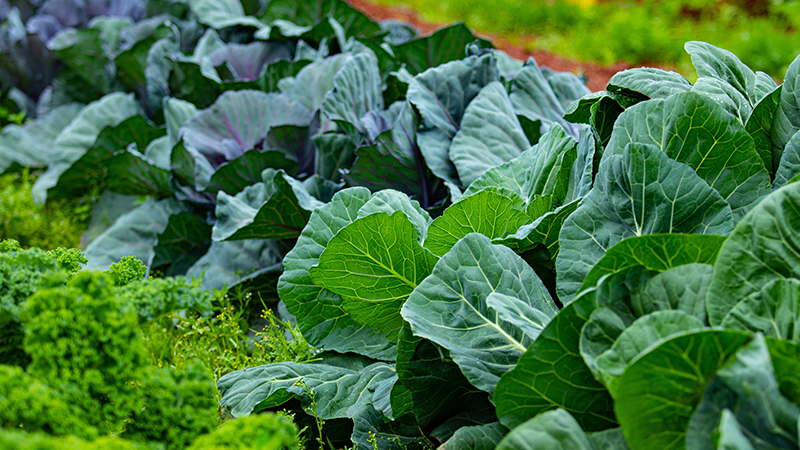Navigating the Smokey Haze — Impacts of Wildfire Smoke on Potatoes

Wildfire smoke can travel long distances depending on upper-level wind patterns. While smoke and ash are harmful to breathe, they can impact your crops, too.
The policy over much of the last century to quickly suppress wildfires no matter where they occur has led to a buildup of fuels in forests. This, coupled with some hot and dry conditions, is resulting in more frequent and intense wildfires across much of the U.S. And even if the wildfires are not actually in the U.S. — if nearby — they still can cause havoc. Just ask the millions of people in the U.S. affected by smoke from immense wildfires in Canada right now.
What’s in Wildfire Smoke?
Wildfires discharge large amounts of carbon dioxide, black and brown carbon, and ozone precursors into the atmosphere. When they mix with air, they can form ozone and organic particulate matter. Many of these things are toxic pollutants that can be harmful to plants, people, and animals when exposed to them in concentration.
These emissions also affect solar radiation and other factors that influence the ground level weather.
Ozone Levels Vary
Ozone is one of the most damaging air pollutants for plants. It enters through the stomata (the pores on the surface of the leaf) during normal gas exchange processes. Once inside the plant, it forms reactive oxygen species that can damage cell membranes and cell contents.
Exposure to high concentrations of ozone for several hours can result in visible injury to leaf tissues. Symptoms may include stippling (small, brown-black spots), flecking (tiny, light-colored spots), bronzing, and reddening.
These symptoms appear within a few hours or days of the exposure. With continued exposure to high concentrations of ozone, symptoms can progress to chlorosis, necrosis, and early plant senescence. Chronic exposure to more moderate levels of ozone may cause no visible symptoms, but it can still impair plant functions and limit growth.
We see ozone symptoms on potatoes occasionally in the Columbia Basin of Washington. But because ozone levels are highly variable, we do not see these symptoms every time there is smoke.
Despite the presence of ozone precursors in smoke plumes, ozone does not always form in large concentrations. It is less likely to concentrate under cool, windy, and cloudy conditions. In fact, I have only observed ozone symptoms on potatoes or other plants when wildfires were nearby (within 100 miles), it was very hot and sunny, and air inversions kept the smoke low to the ground and limited its dispersal.
How Does Smoke Affect Photosynthesis?
Some growers speculate wildfire smoke is limiting yields by reducing light intensity and thereby slowing photosynthesis. But the ways that smoke influence photosynthesis are complex.
The main factors that determine the photosynthetic rate are light intensity, carbon dioxide concentration, and temperature.
Obviously light intensity is reduced by smoke, but smoke does not completely block the sun’s rays. By contrast, carbon dioxide levels are increased by wildfires. Increasing carbon dioxide usually leads to an increase in the photosynthetic rate, because normal atmospheric levels tend to be limiting.
Temperatures are often more moderate when there is smoke. Since the optimal temperature for potato growth peaks around 86˚F, the smoke cover may actually be a positive factor in regions that experience high daytime temperatures.
So the degree to which smoke limits potato yields probably depends on how much light it actually blocksd — the darker it is, the more likely it is having a negative effect.
This is an oversimplification of the influences smoke can have on photosynthesis, since we must also consider that the chemical constituents of smoke can have damaging effects on plant functions at a cellular level.
Environmental Conditions
Smoke, especially when linked to air inversions, has some unexpected effects on environmental conditions. Smoke tends to prolong thermal air inversion conditions because it blocks sunlight and inhibits some of the radiant warming of the ground layer that is needed to break up the warm inversion layer.
Essentially, the warm inversion layer acts like a lid trapping cooler air at the surface. If the conditions are cool enough at night and water condenses on the plants, smoke can help to keep dew around longer, because it blocks the sun’s rays and delays evaporation.
Implications for Potato Diseases
We tend to see an increase in some potato diseases when slightly cooler and wetter conditions prevail. In the Columbia Basin, our hot and dry summer environment usually discourages diseases like gray mold (caused by Botrytis cinerea) and late blight (caused by Phytopthora infestans). But wildfire smoke cover can modify the environment so that it favors these diseases.
Human Health Concerns
If you want to know how wildfires (and other things) are affecting air quality, you can visit the EPA’s AirNow website.
The website has maps showing current readings from sensors that monitor air quality across the country. The readings are in a color code that relates to human health:
- Green is good.
- Yellow is moderate.
- Orange is unhealthy if you have asthma or some other conditions that make you more sensitive.
- Red to purple means conditions are unhealthy or hazardous for everyone.
This website also provides information about how to protect yourself when air quality conditions are poor. You should really pay attention to this information if you are responsible for other people who work outside.










